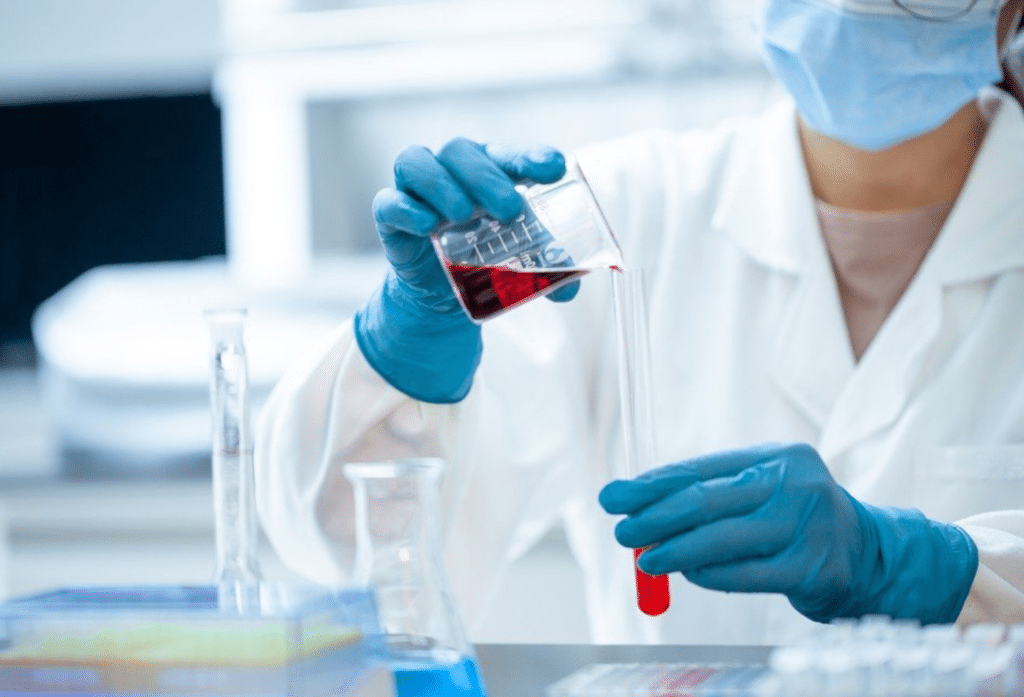Platelet-rich-plasma, or PRP, is a fraction of blood obtained upon centrifugation that is enriched for cells called platelets. Other cells, including white blood cells and red blood cells are ideally excluded. Platelets have been shown to secrete chemicals that facilitate clot formation and are vital in preventing excessive bleeding in humans, but they are also capable of secreting other factors that facilitate cell growth and tissue repair. It is for this restorative capacity that PRP has been applied as a therapeutic modality in various human ailments, including joint and muscle disease (arthritis/tendonitis), dentistry, and cosmetic surgery (wrinkles and alopecia). Although PRP injection has been utilized as of late as a method to enhance fertility through potential beneficial effects on both the uterine lining and the ovaries, this blog will pay specific attention to PRP’s potential to the latter.
As physicians whose main purpose is to optimize the reproductive well-being of women and facilitate their ability to conceive, reproductive endocrinologists are intrigued by the possible boon to ovarian function and longevity that PRP may represent. So, does intra-ovarian PRP work? The data at this point is very limited, and although promising is far from conclusive. As of this time, there are less than 10 published scientific papers that report study findings attributable to the usage of intra-ovarian PRP injection. None are large, placebo-controlled, randomized, prospective trials that would best elevate or repudiate the standing of intra-ovarian PRP as a treatment for low egg reserve. One study was a prospective pilot study that lacked sufficient power to truly assess the effects of PRP. In this study, 20 women who received PRP before IVF were compared to 20 women who did not. In the end, these patients had statistically similar live birth rates, although there was a clear positive trend in favor of PRP (33.33% vs 10.71%). The other studies were essentially all case series studies, ranging from single patient case reports to those with more than 500 patients. None had control groups, and all involved assessing outcomes in women with low egg reserve before and after the administration of PRP. The women in these groups tended to demonstrate lower FSH, higher AMH, and greater egg yield post-PRP. The live birth rates after PRP treatment ranged anywhere from 0 to 15.7%. Given that the age range in these case series was broad, with some patients in their 20s and early 30s, it is possible that many PRP treated patients may have conceived with no intervention given that approximately 10% of women diagnosed with premature ovarian failure ultimately conceive spontaneously. Clearly more work is needed.
Should PRP be a standard treatment for women suffering from infertility associated with low egg reserve? At this point, likely not. However, with proper informed consent and guidance, a trial of PRP is seemingly reasonable when all else fails and donor egg IVF is not an option. Many now standard, extremely successful treatments in the IVF world started out as experimental, including intracytoplasmic sperm injection (ICSI) and egg freezing for future fertility. Ideally the usage of intra-ovarian PRP at these stages be within the construct of a large and well-designed study to gain the understanding we need. As the literature on intraovarian PRP accumulates, our opinion on its usefulness and application will evolve, and it would be exceedingly fortunate to learn that its application in poor prognosis infertility patients genuinely improves outcomes.
References:
- Cakiroglu Y, Saltik A, Yuceturk A, Karaosmanoglu O, Kopuk SY, Scott RT, Tiras B, Seli E. Effects of intraovarian injection of autologous platelet rich plasma on ovarian reserve and IVF outcome parameters in women with primary ovarian insufficiency. Aging (Albany NY). 2020 Jun 5;12(11):10211-10222.
- Cakiroglu Y, Yuceturk A, Karaosmanoglu O, Kopuk SY, Korun ZEU, Herlihy N, Scott RT, Tiras B, Seli E. Ovarian reserve parameters and IVF outcomes in 510 women with poor ovarian response (POR) treated with intraovarian injection of autologous platelet rich plasma (PRP). Aging (Albany NY). 2022 Mar 22;14(6):2513-2523.
- Petryk N, Petryk M. Ovarian Rejuvenation Through Platelet-Rich Autologous Plasma (PRP)-a Chance to Have a Baby Without Donor Eggs, Improving the Life Quality of Women Suffering from Early Menopause Without Synthetic Hormonal Treatment. Reprod Sci. 2020 Nov;27(11):1975-1982.
- Pantos K, Simopoulou M, Pantou A, Rapani A, Tsioulou P, Nitsos N, Syrkos S, Pappas A, Koutsilieris M, Sfakianoudis K. A Case Series on Natural Conceptions Resulting in Ongoing Pregnancies in Menopausal and Prematurely Menopausal Women Following Platelet-Rich Plasma Treatment. Cell Transplant. 2019 Sep-Oct;28(9-10):1333-134
- Stojkovska S, Dimitrov G, Stamenkovska N, Hadzi-Lega M, Petanovski Z. Live Birth Rates in Poor Responders’ Group after Previous Treatment with Autologous Platelet-Rich Plasma and Low Dose Ovarian Stimulation Compared with Poor Responders Used Only Low Dose Ovarian Stimulation Before in Vitro Fertilization. Open Access Maced J Med Sci. 2019 Sep 14;7(19):3184-3188








